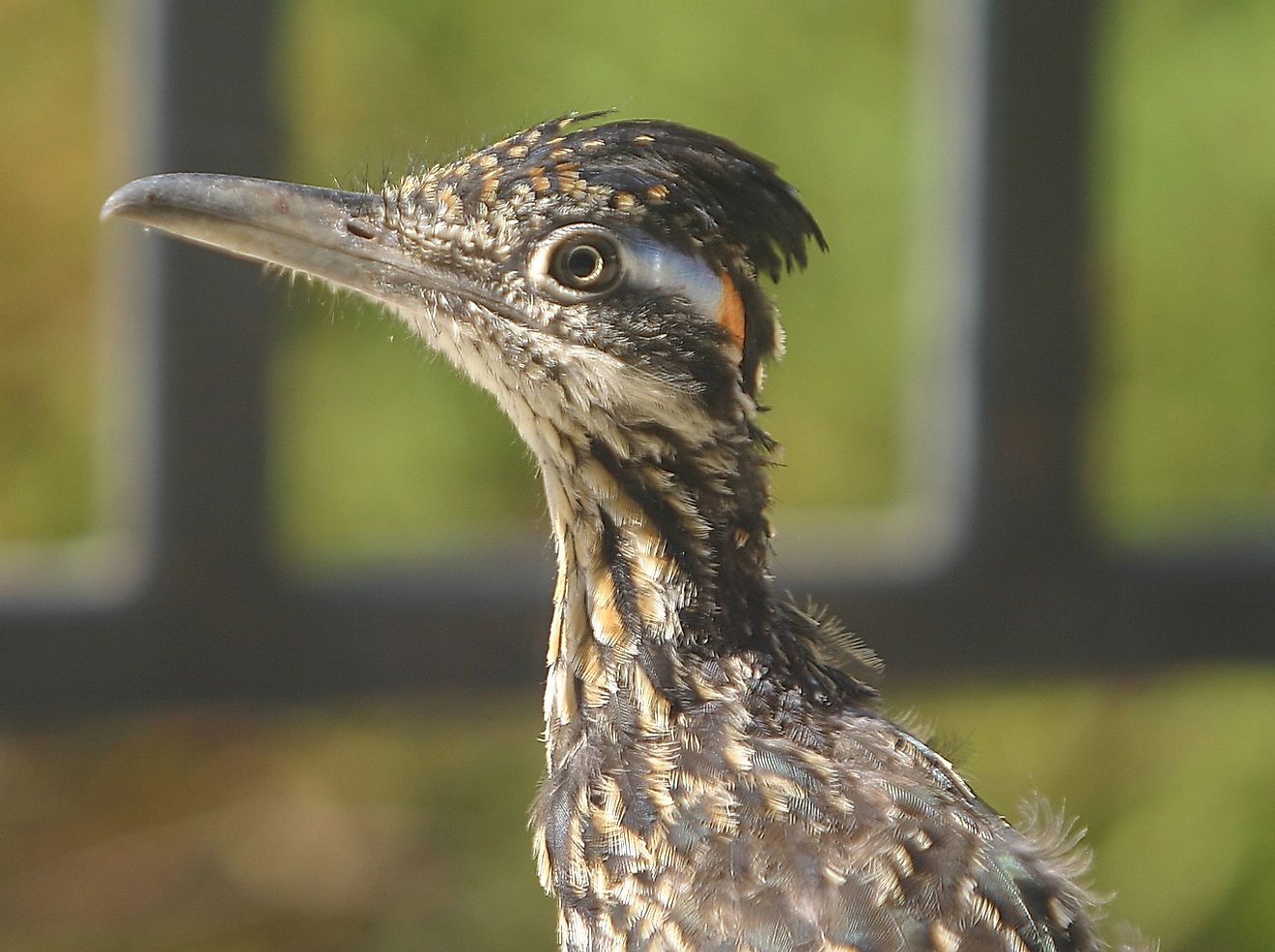Roadrunner Facts: Animals of North America

5. Physical Description
The Roadrunner, (Latinized as Geococcyx californianus), is a large, black-and-white mottled ground bird with a distinctive head crest. It has strong feet which allow for its fast running abilities, a long, white-tipped tail, and an oversized bill. Roadrunners range in length from 20 to 24 inches from the tip of their tails to the ends of their beaks. As a member of the Cuckoo family, it is identified by feet with 2 forward and 2 rearward toes. These toes are brown, and have pale gold spots. Their upper body is mostly brown, while the neck and upper breast of Roadrunners are white.
4. Diet
The roadrunner is an opportunistic omnivore. Its diet normally consists of insects, such as grasshoppers, crickets, caterpillars and beetles, small reptiles, such as lizards and snakes, rodents and other small mammals, as well as spiders, scorpions, centipedes, snails, small birds, and eggs. They get a good deal of vegetable produce down their gullets as well, including fruits, seeds, and sumacs. Roadrunner usually forage on the ground and, when hunting, they make surprise runs upon prey from under cover. Roadrunners can also leap into the air to catch insects, and are very good at battering prey to death against the ground. Because they can run so fast, they will even prey upon darting rattlesnakes.
3. Habitat and Range
Roadrunners are most commonly found in the deserts and bushy regions of the southwestern United States, Mexico, and Central America. They are most commonly spotted in the US in the states of Utah, Colorado, and Oklahoma. They tend to inhabit open, flat, or sweeping terrain with sparse cover limited to various kinds of desert scrub. Because of their adaptations to the desert environment and the general lack of human activities in those kinds of areas, roadrunners are not considered endangered or threatened, but at the same time their habitat has been encroached upon in certain areas.
2. Behavior
Not much of a socialite, Roadrunners will usually live alone or in pairs. Pairs will often occupy a single space of territory for a long period of time.Their carnivorous habits usually help them to gather a large supply of a very damp food which helps keep them hydrated, and they will also reabsorb water from their feces before excretion as well. Moreover, they are also capable of eliminating excess salt in their food from their nasal glands . Because they can run as fast as close to 20 miles per hour, they are very good predators, and can escape other predators rather easily themselves, through either running or flying. They are also known to make rapid, vocalized clattering sounds with their beaks.
1. Reproduction
Breeding pairs of roadrunners are monogamous, and will mate together throughout their lifetimes. A male will try to win over a female by way of a courtship display, during which the male bows and parades in front of his potential mates with his head high and wings and tails dropped down. The reproductive season for them runs from spring until the middle of summer. Females breed and hatch eggs within nests, which are often composed of sticks, and located in tall trees. Their eggs are usually white. Each clutch usually consists of between 2 and 6 eggs. Hatching is asynchronous, and both parents take turns in both incubating the nests and feeding the hatchlings.







